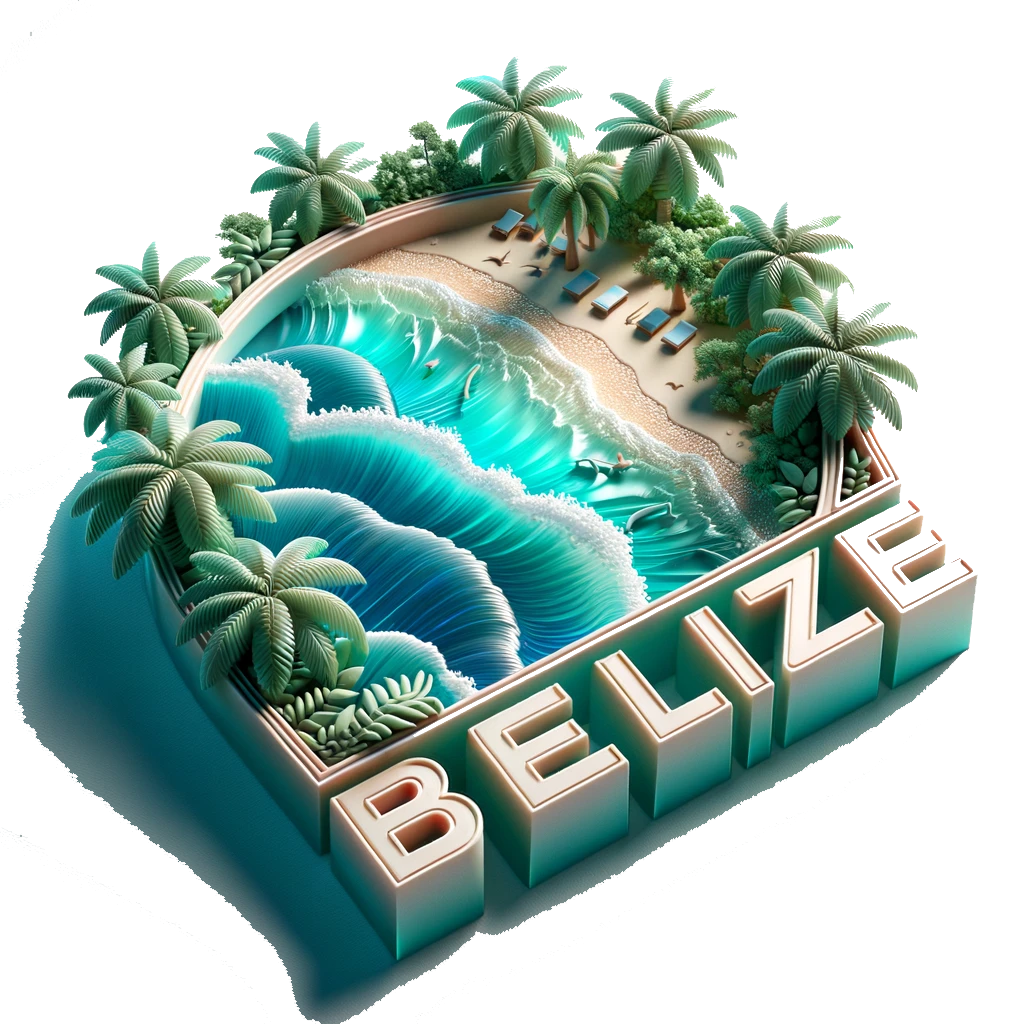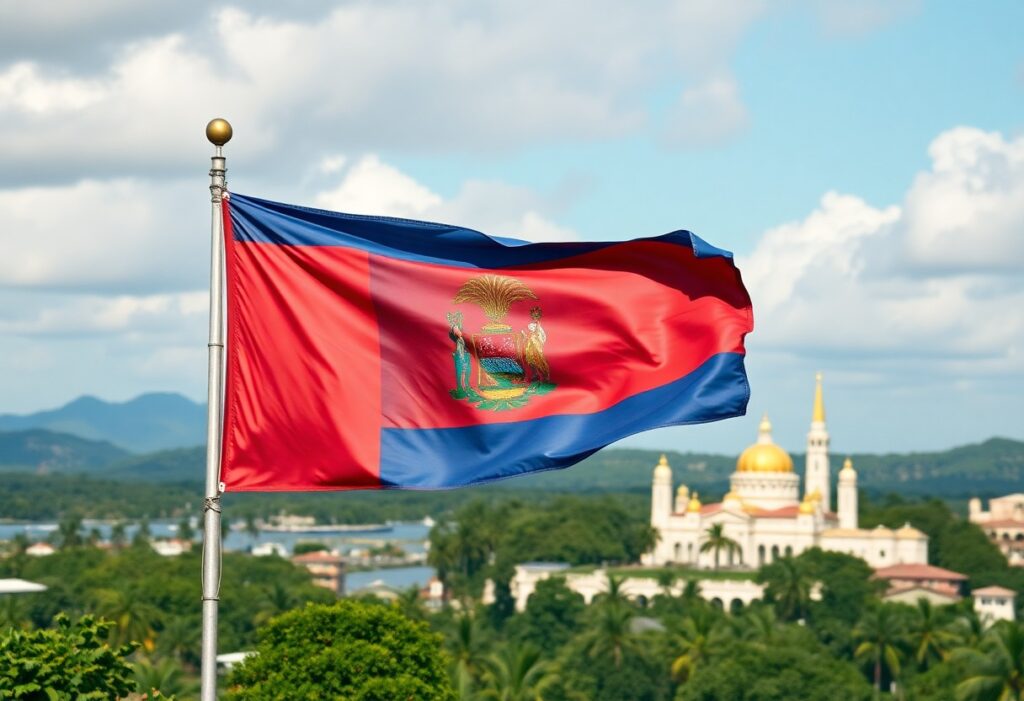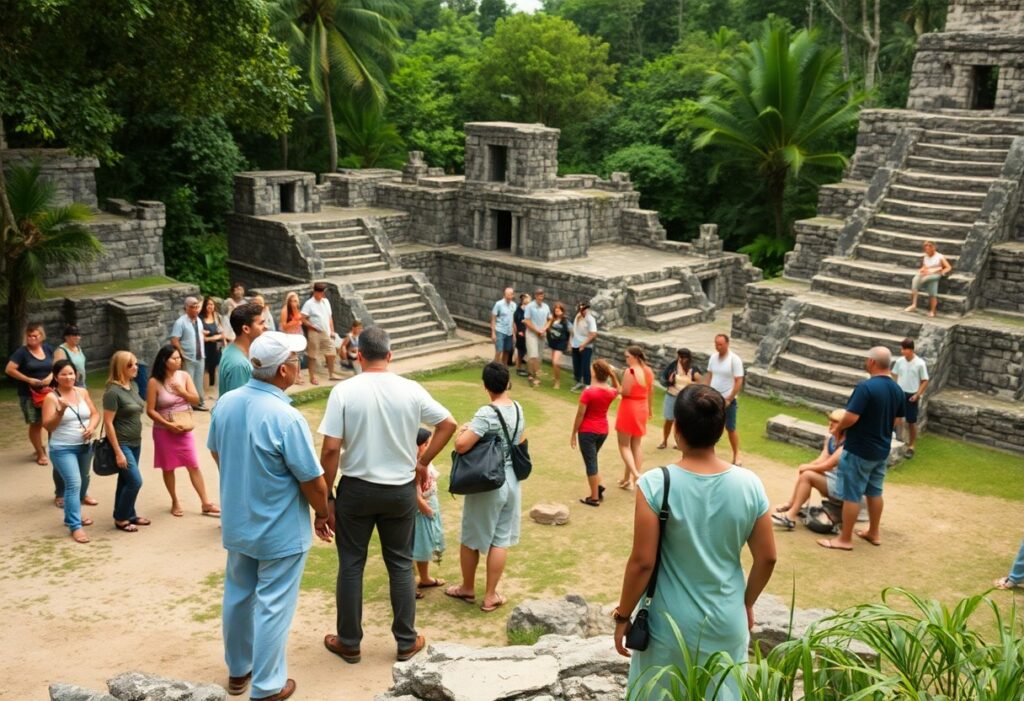Most visitors to Belize don’t realize that you’re in the presence of one of Mesoamerica’s most significant archaeological discoveries. The Jade Head, a masterpiece depicted on your Belizean currency, represents the Maya Sun God Kinich Ahau and is the largest carved jade object ever discovered in the Western Hemisphere. When you explore this remarkable artifact’s history, you’ll find it was unearthed in 1968 at Altun Ha’s “Temple of Masonry Altars,” which lay hidden for over a millennium. At 9.75 pounds and 6 inches in height, this priceless national treasure stands as your gateway to understanding the sophisticated artistry and cultural richness of ancient Maya civilization.
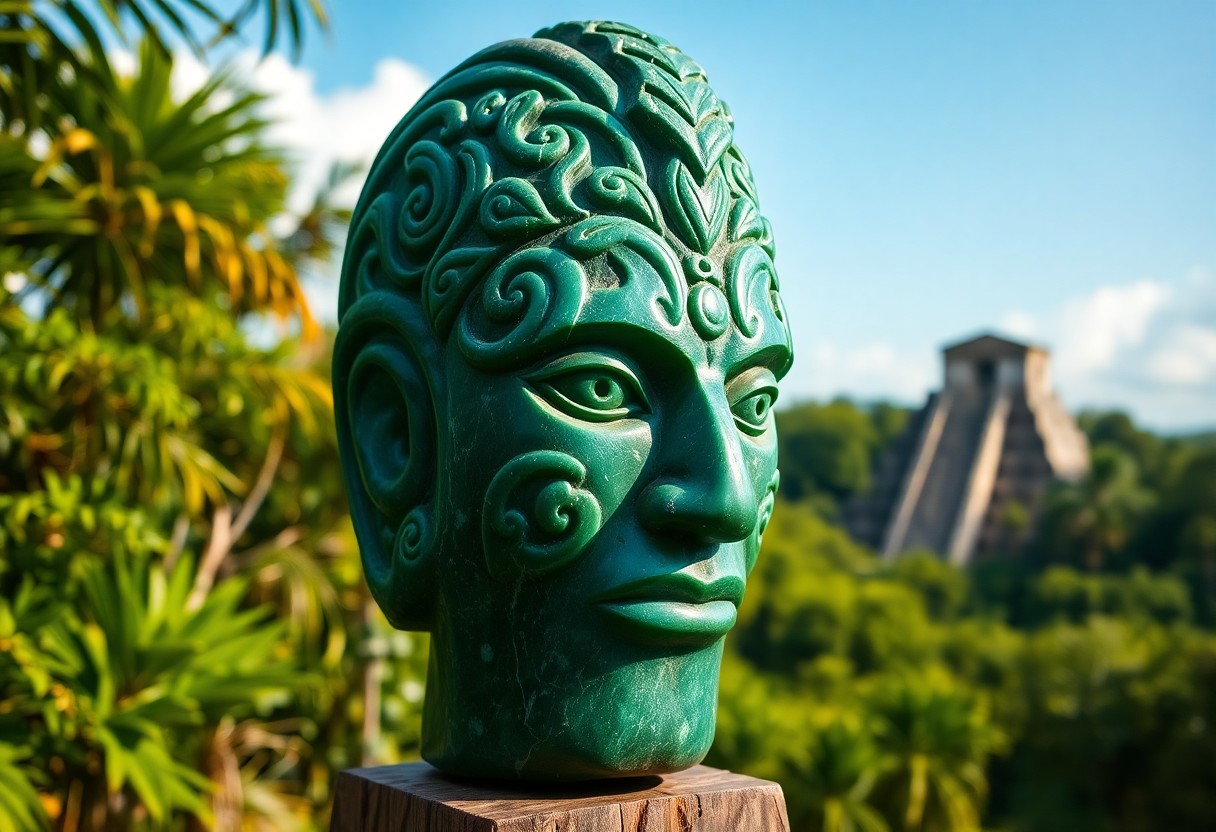
Historical Significance and Discovery
The jade head represents a monumental archaeological discovery for your understanding of Belizean heritage. When discovered in 1968 at Altun Ha’s “Temple of Masonry Altars,” this masterpiece revolutionized your perception of Maya craftsmanship. You’ll be amazed to know it’s the largest carved jade object ever found in the Western hemisphere, marking a pivotal moment in Mesoamerican archaeology.
Archaeological Excavation Details
For your historical knowledge, Dr. David Pendergast conducted the excavation with local Belizeans Wilhem Leslie and Winston Herbert. The team discovered the artifact in a royal tomb alongside forty other objects and the remains of an elderly male elite. It is fascinating that this discovery occurred in Structure B-4, dating back to the Maya Classic Period (A.D. 500-600).
Physical Characteristics and Origin
To appreciate its magnificence, you should know the Jade Head weighs 9.75 pounds and stands 6 inches high. Your understanding of its significance grows when you learn it depicts Kinich Ahau, the Maya Sun God, crafted from jade sourced from the ancient Motagua River mines in Guatemala.
Plus, you’ll be intrigued to know that the Jade Head’s exceptional craftsmanship reveals the advanced artistic skills of Maya artisans. When you examine its features, you’ll notice the intricate details that have made it worthy of appearing on all Belizean currencies. Your appreciation of this masterpiece is enhanced by its perfect preservation over centuries, allowing you to witness its original splendor today.
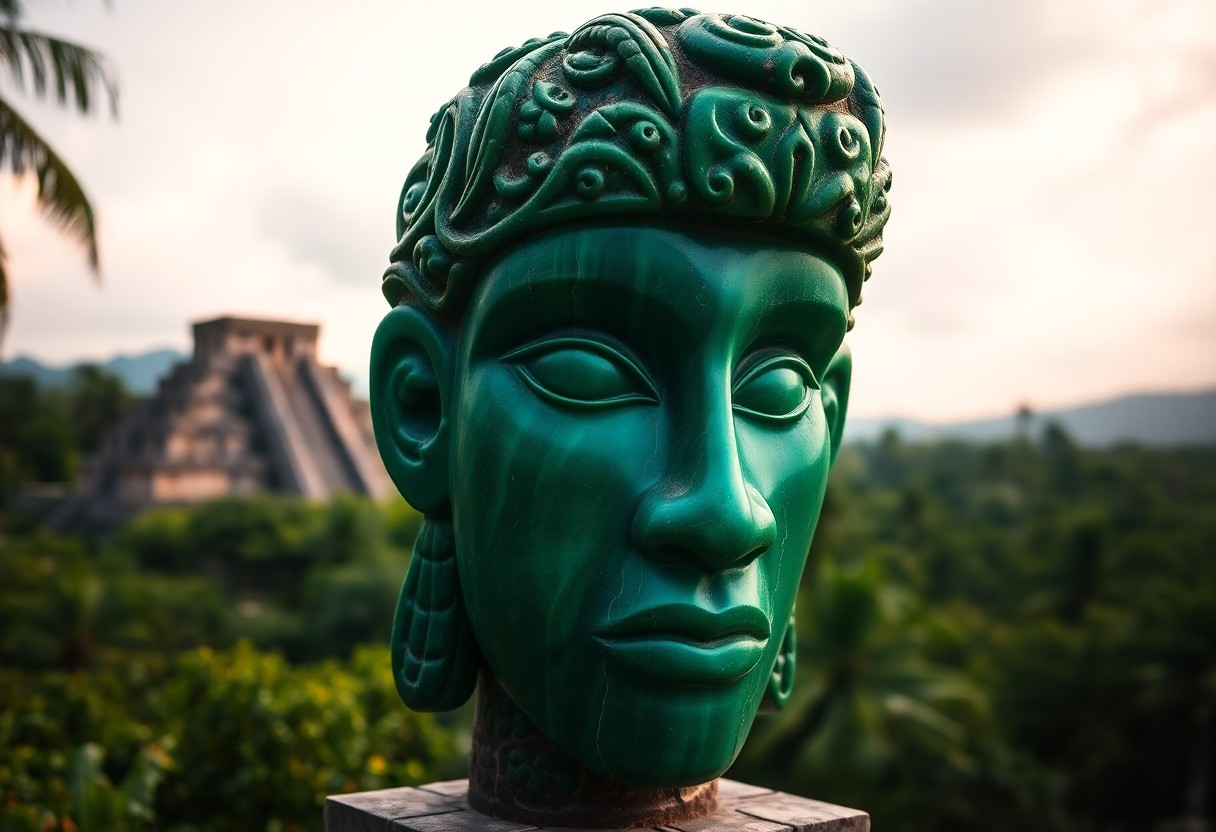
Artistic and Cultural Value
It represents one of the most remarkable achievements in Maya art history. When you examine this masterpiece, you’ll notice its exceptional craftsmanship, which showcases the sophisticated artistic capabilities of ancient Maya civilization. The head’s perfectly proportioned features and intricate details demonstrate your ancestors’ advanced understanding of sculpture and symbolism.
Maya Craftsmanship Techniques
Assuming you’re curious about the creation process, you should know that Maya artisans carved this masterpiece using primitive tools and incredible patience. Your understanding of their techniques will deepen when you learn they worked without metal tools, using only stone, wooden, and reed implements to achieve such precise details in one of the most complex materials known to them.
Religious and Ceremonial Importance
This artifact provides some of the most significant insights into Maya religious practices. The jade head represents Kinich Ahau, the Maya Sun God, and was likely used in powerful royal ceremonies at Altun Ha around 600 AD.
When you examine the artifact’s context, you’ll discover its placement in the tomb, which suggests it held immense spiritual power. Your connection to ancient Maya beliefs deepens with the knowledge that jade was considered more valuable than gold, symbolizing immortality and divine power in Maya culture.
Types of Jade Used in Maya Artifacts
If you are interested in Maya jade artifacts, you should know that the ancient Maya utilized various jade varieties in their ceremonial objects. The most valued type was jadeite, sourced primarily from the Motagua Valley. After centuries of trade, archaeologists have identified distinct classifications based on color, clarity, and hardness.
| Jade Type | Characteristics |
|---|---|
| Imperial Jade | Emerald green, highly translucent |
| Olmec Blue | Blue-green, medium transparency |
| Lilac Jade | Purple-tinted, rare variety |
| White Jade | Pale, often used for royal items |
| Black Jade | Dark green to black, dense opacity |
Guatemalan Jade Properties
There’s something special about Guatemalan jade that sets it apart from other sources. A careful examination would reveal its superior hardness (6.5-7 on the Mohs scale) and exceptional durability. These properties made it perfect for Maya artisans to create intricate carvings that have survived millennia.
Other Maya Jade Classifications
One of your most fascinating discoveries about Maya jade would be their color classification system. The Maya valued green jade above all other varieties, associating it with water, fertility, and life.
Guatemalan jade deposits provided the Maya with an unprecedented variety of colors and qualities. These ancient artisans developed sophisticated techniques to work with different jade types, from translucent green specimens to rare lavender-tinted varieties.
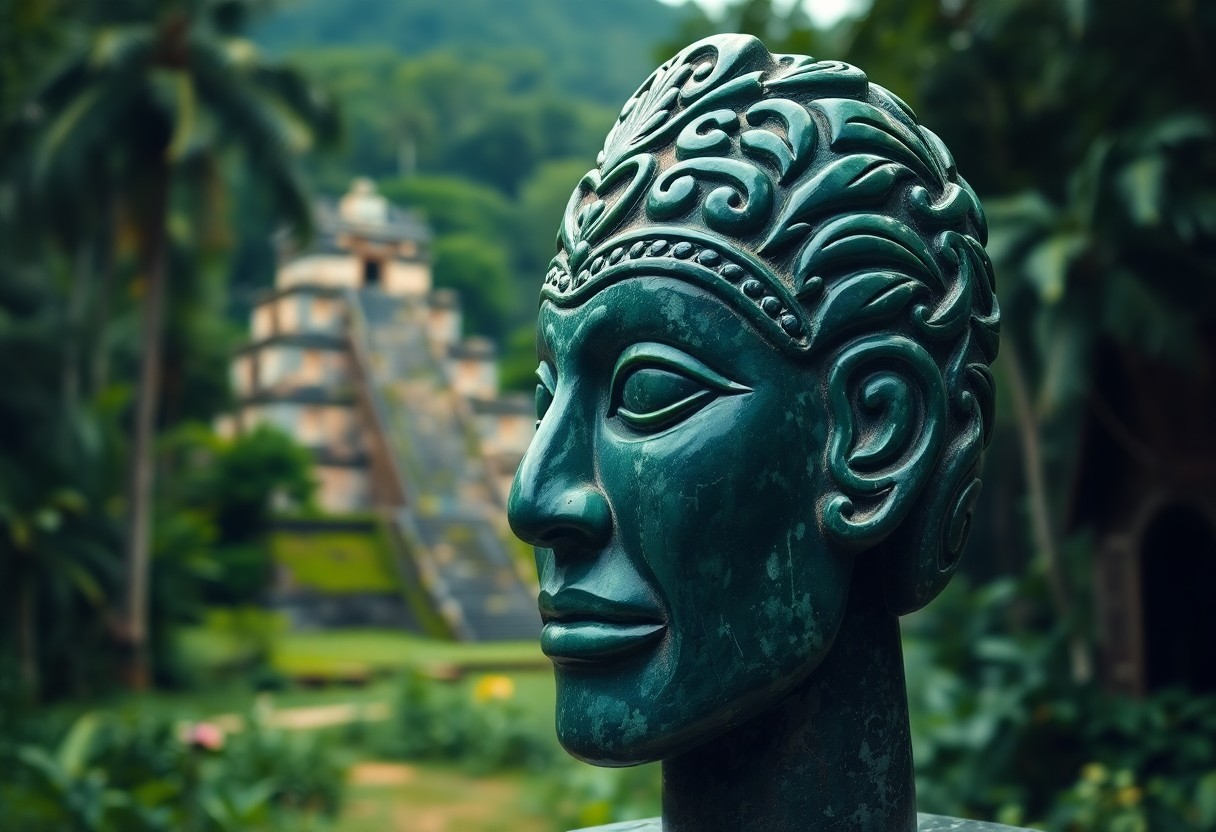
Step-by-Step Creation Process
Remember the intricate process your Maya ancestors used to transform raw jade into masterpieces like the Jade Head. The creation involved multiple stages of careful planning and execution.
Creation Stages and Duration
| Initial Shaping | 2-3 months |
| Detailed Carving | 4-6 months |
| Final Polishing | 1-2 months |
Ancient Carving Techniques
The process of creating the Jade Head required exceptional skill and patience. Your understanding of these techniques reveals how Maya artisans used string saws with water and sand for initial cutting, followed by careful chipping and abrading to achieve the desired shape.
Tools and Methods Used
If you examine the Jade Head closely, you’ll notice the remarkable precision achieved using essential tools. The Maya artisans employed wooden and stone implements, including cord drills, stone points, and bamboo sticks with abrasive materials.
Combined with fine quartz sand and water, these tools allowed your Maya ancestors to achieve the smooth, polished finish still visible on the Jade Head today. The entire process could take up to a year, demonstrating the dedication and craftsmanship required for such masterpieces.
Factors Affecting Preservation
Understanding the preservation challenges facing the Jade Head is imperative for appreciating its survival through the centuries. The artifact faces threats from temperature fluctuations, humidity, and human handling. Recognizing these factors has led to the implementation of strict preservation protocols at the Central Bank of Belize, where the Jade Head is now stored.
Environmental Considerations
The Jade Head requires precise climate control to maintain its integrity daily. Even minor variations in temperature and humidity can potentially affect the jade material. To prevent degradation, the artifact is kept in a specially designed vault with controlled atmospheric conditions at 70°F (21°C) and 45% relative humidity.
Conservation Measures
Some of the most advanced preservation techniques protect this priceless artifact. You’ll see state-of-the-art security systems, specialized display cases, and handling protocols that ensure minimal contact with the Jade Head. The Central Bank employs trained conservators who monitor its condition regularly.
Understanding proper conservation requires constant vigilance and expertise. Your awareness of these measures helps you appreciate why public viewing is limited. The Bank’s conservation team uses noninvasive monitoring methods and maintains detailed records of the artifact’s condition. The 3D digital preservation through the Access501 platform now allows you to study the Jade Head’s details without risking the physical artifact.
Modern Significance
Now, you can witness how the Jade Head has evolved from an archaeological marvel to Belize’s most significant cultural icon. This masterpiece represents the pinnacle of Maya craftsmanship and serves as your window into understanding the sophisticated civilization that once flourished in your modern-day Belize.
National Symbol Status
While you handle any Belizean dollar bill, you’ll notice the Jade Head prominently featured as the central image on all denominations. Your country’s decision to place this artifact on its currency in 1990 transformed it into a powerful symbol of national identity, marking the first time a Maya artifact received such recognition in Central America.
Tourism and Educational Impact
With your visit to Belize, you’ll discover how the Jade Head has become a significant driver of cultural tourism. The artifact draws thousands of visitors annually to the Central Bank of Belize, where you can view a replica while the original remains securely stored in a vault for preservation.
Symbol of Maya excellence, the Jade Head now reaches beyond physical boundaries through Access501’s innovative digital platform. You can explore detailed 3D models of this masterpiece from anywhere in the world, making your educational journey into Belize’s heritage more accessible than ever. This digital initiative has revolutionized interacting with this priceless artifact, bringing ancient Maya civilization to your fingertips.
To wrap up
So, when you explore the story of the Jade Head, you’ll discover more than just an archaeological treasure – you’re connecting with the heart of Belize’s cultural identity. Understanding this masterpiece helps you appreciate how the Maya civilization’s artistic and technological achievements continue to influence Belize today. Whether you see its image on Belizean currency or explore its digital rendering on Access501, the Jade Head gives you a window into ancient Maya craftsmanship and modern Belizean pride. This 9.75-pound jade marvel remains a powerful symbol of Belize’s rich heritage.
FAQ
Where is the Jade Head of Belize stored, and can visitors see it?
The Jade Head is stored in a highly secure vault at the Central Bank of Belize in Belize City. Due to its immense value and historical significance, the original artifact is not publicly displayed; however, visitors can view detailed replicas at the Museum of Belize and explore a digital 3D model through the Access501 learning platform. The Jade Head’s image appears on all Belizean paper currency as a symnational heritage symbolWhat makes the Jade Head of Belize so significant to Maya archaeology?
The Jade Head holds multiple distinctions in Maya archaeology. At 9.75 pounds (4.42 kg), it’s the largest carved jade object discovered in the entire Western hemisphere. The artifact represents Kinich Ahau, the Maya Sun God, and showcases the exceptional craftsmanship of Maya artisans. Its discovery, i968 at Altun Ha, provided valuable insights into Maya trade networks, as the jade material originated from the Motagua River region in Guatemala.
How did archaeologists discover the Jade Head, and what else was found?
The Jade Head was discovered in 1968 by Belizean workers Wilhem Leslie and Winston Herbert, alongside Dr. David Pendergast from the Royal Ontario Museum. They found it within a tomb in Altun Ha’s “Temple of Masonry Altars” alongside forty other objects. The tomb contained the remains of an elderly male, who wasbelieved to be a high-status individual. These findings have helped archaeologists understand ancient Maya society’s social hierarchy and wealth distribution in ancient Maya society.
